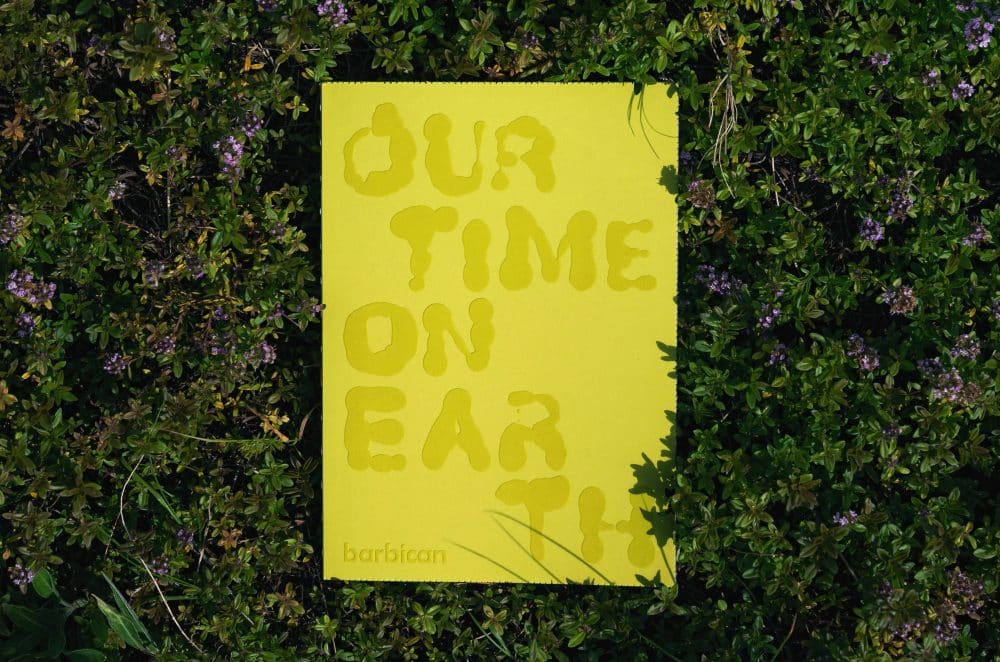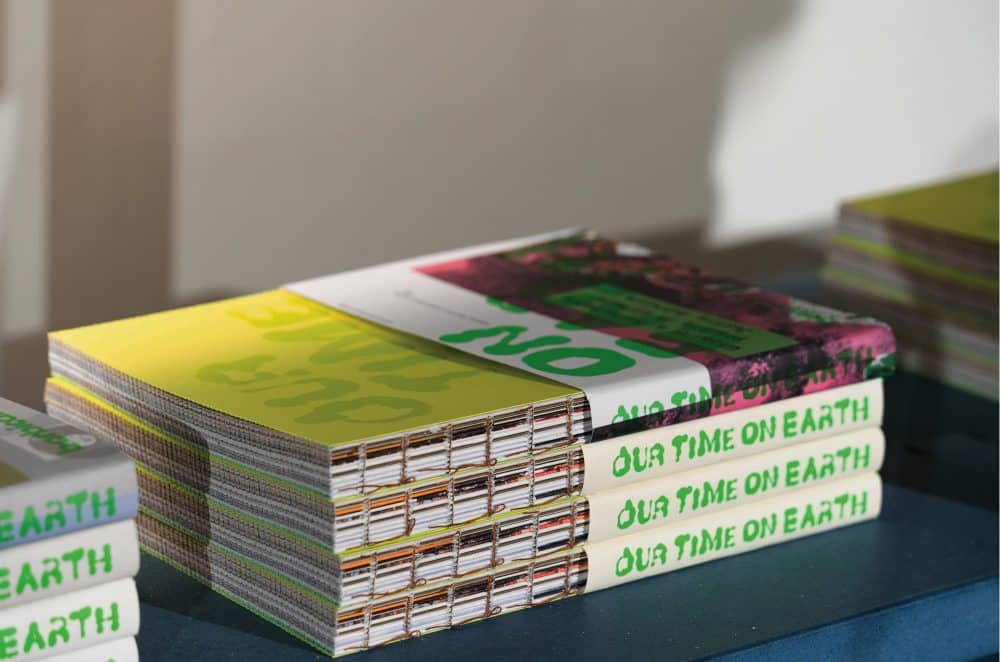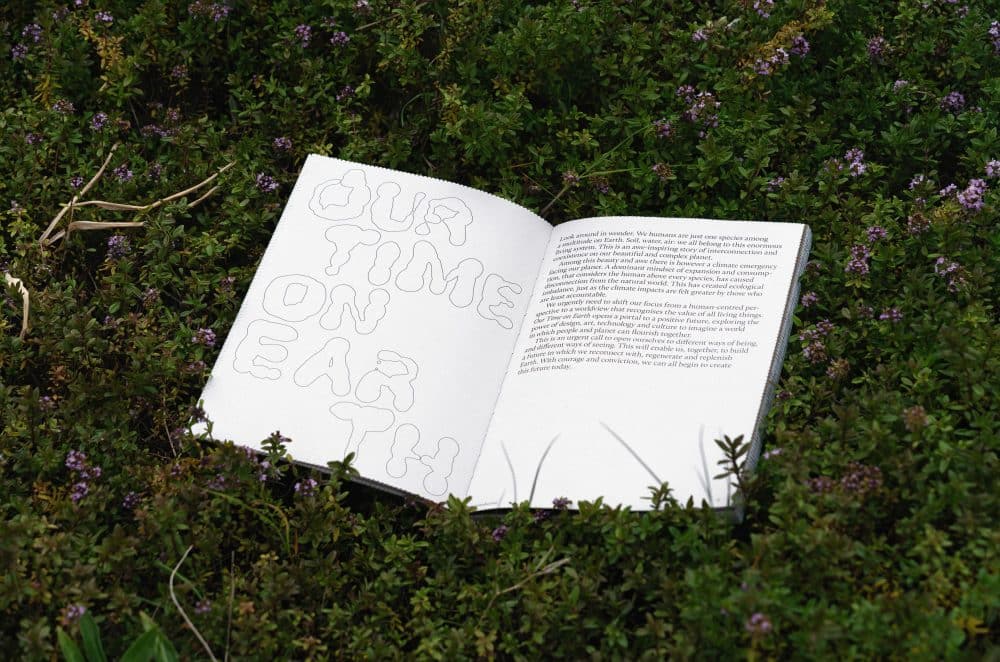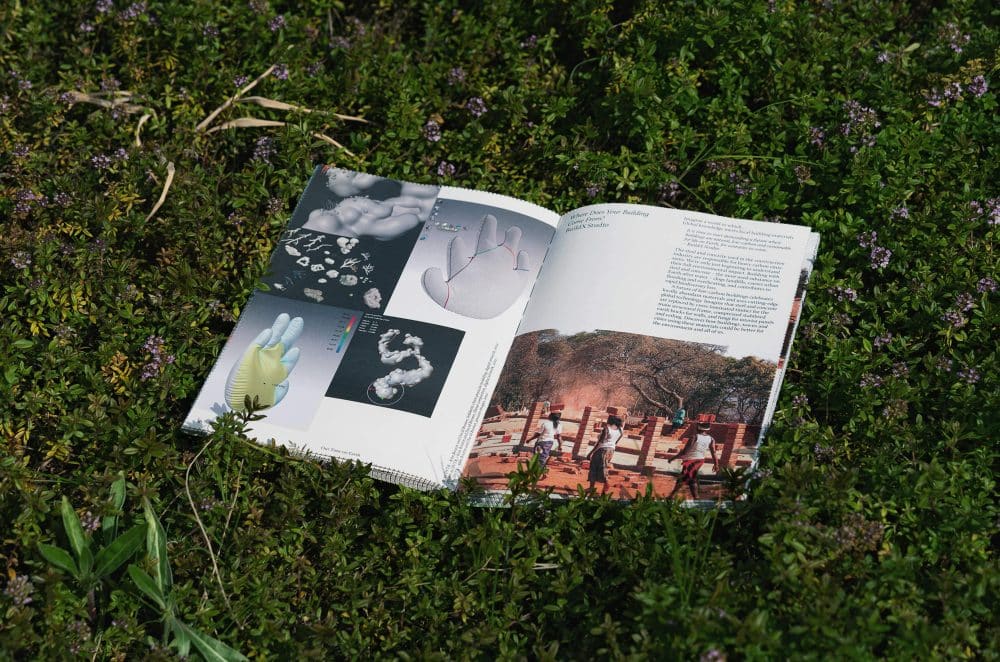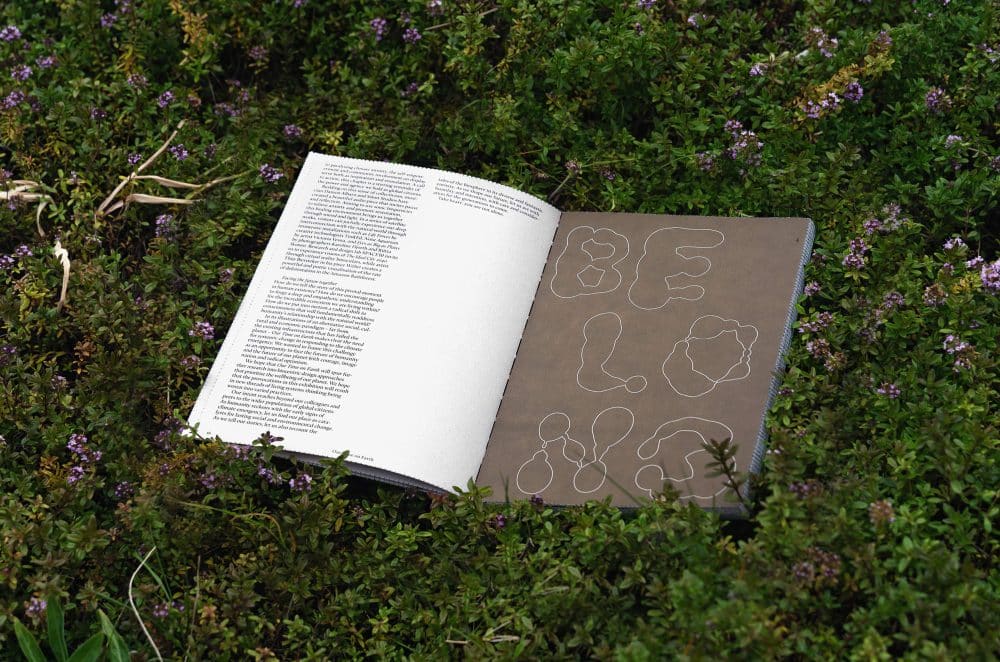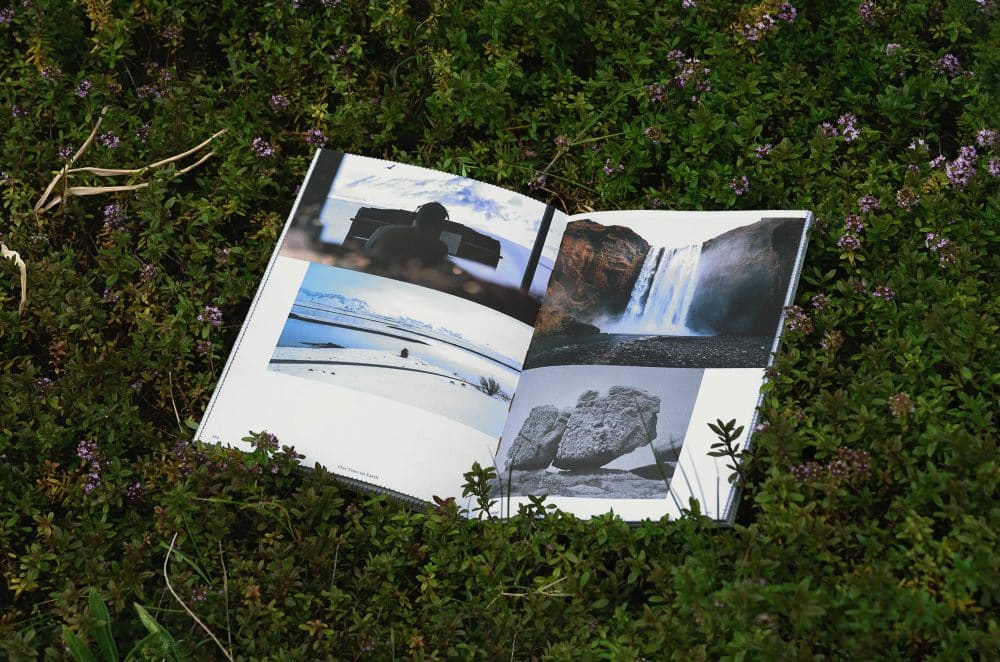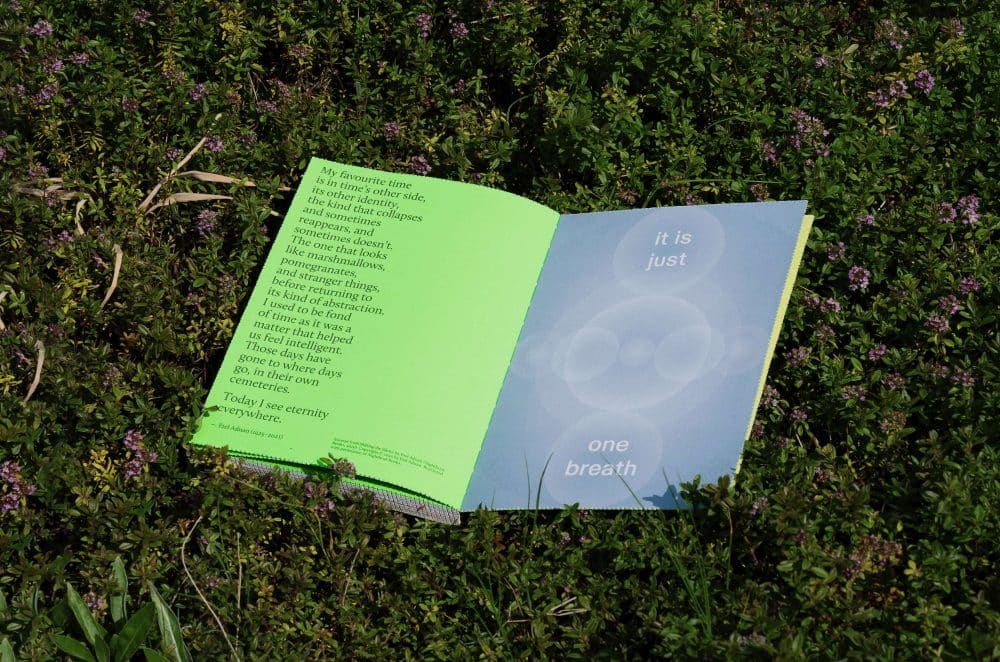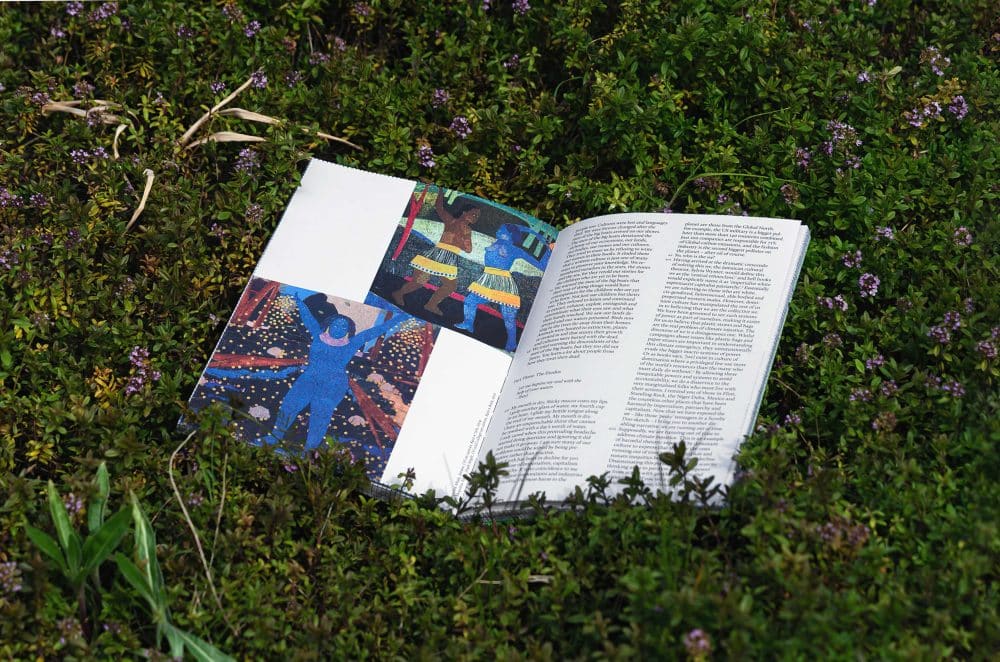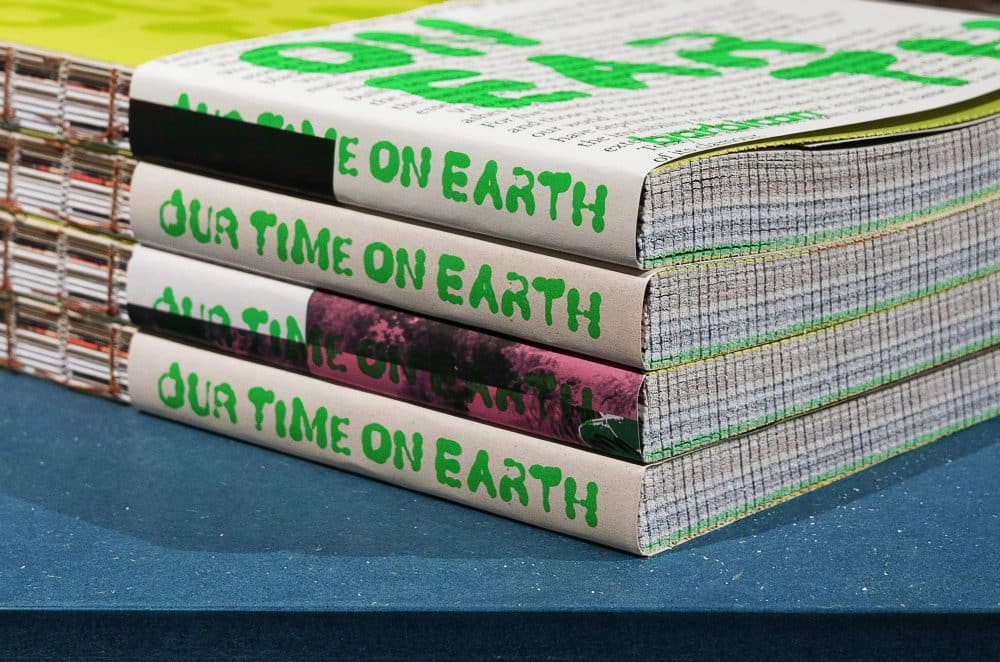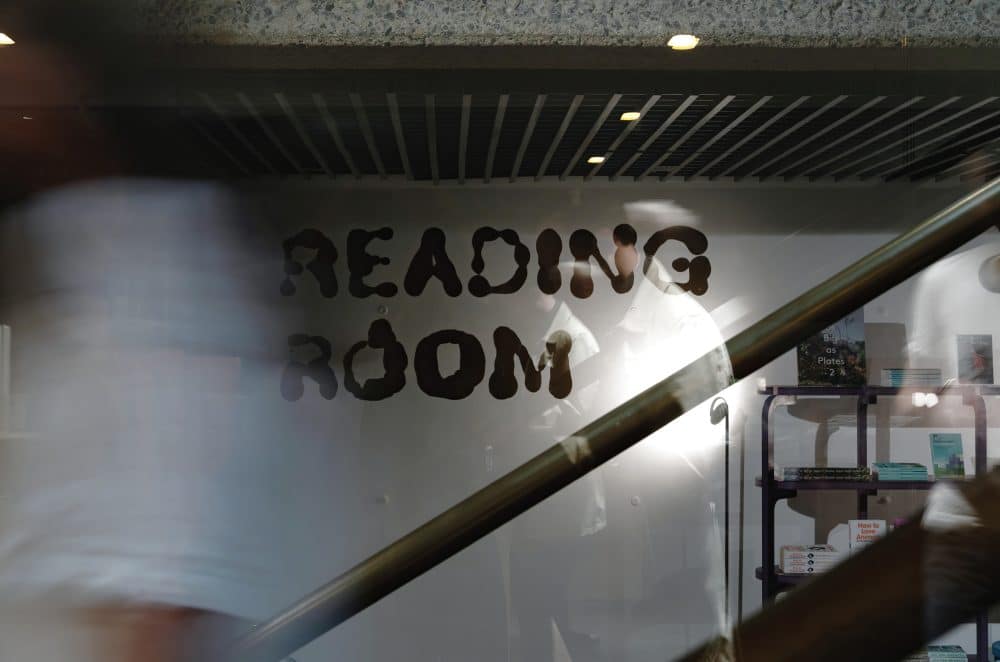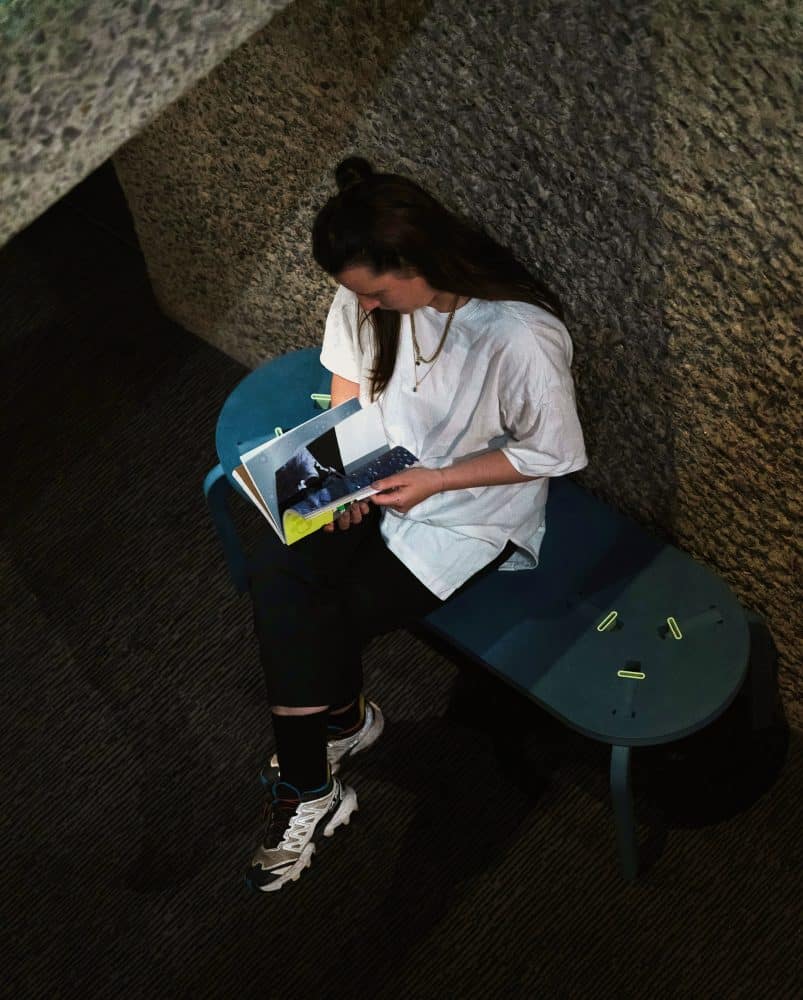Our Time on Earth
Barbican, 2022
London
Catalogue design for exhibition Our Time On Earth.
An exhibition, exploring radical ideas for the way we live, Our Time on Earth looks at how creativity and technology can bring us closer to nature and transform the conversation on climate change, revealing indigenous insights which can reconnect us to our roots. Co-curated by Barbican and FranklinTill.
The design for the catalogue focuses on its need to be as sustainable as possible, thinking further than just the use of recycled paper and vegetable inks, into eco-innovative methods of book production. The design and production of the book is the result of a careful balance between sustainable desires, economic considerations and the exhibition’s intentions – to have a positive and inspiring outlook on our future, and our ability to tackle the climate crisis – emphasising this through colour and impact, rather than the muted tones and materials associated with sustainability.
Echoing the nature of the exhibition, the book’s display typeface is made through a process of chance, delivering unpredictable outcomes that reflect natural forms. The layouts, developed from the golden section, present thin margins as a means to maximise the print space and reduce paper consumption. They combine the warm, accessible typeface, Calluna with a digital treatment of images, inspired by the digital nature of the exhibition’s content.
The catalogue uses four paper stocks: Revive Natural, Oxygen Recycled, Crush Grape and Woodstock Pistachio, all carefully selected for their sustainable production – from raw material to production processes. Their combined graded colours signify the much needed shift in our perspective towards the climate crisis, as outlined through the chapters in the book: Belong, Imagine, Engage. The book is printed using algae ink throughout (for the first time in the UK) by Calverts, London, due to their locality to the Barbican and sustainable credentials.
The book includes a text written by Stinsensqueeze, sharing their research, insights and consideration throughout its design process and production.
In addition to the development of the catalogue, Stinsensqueeze developed a reading room, which was situated at the Barbican for the duration of the exhibition. Environmentally conscious furniture was devised by Lab-083, allowing visitors to sit and read the catalogue without the need of purchasing it, and therefore reducing the need for a new print run, and celebrating the accessibility of knowledge.
Highly commended, British book design and production awards,
exhibition catalogue category, 2023
240 x 170mm, 176pp
Printed by Calverts, London
Photography by Hannah Thual
